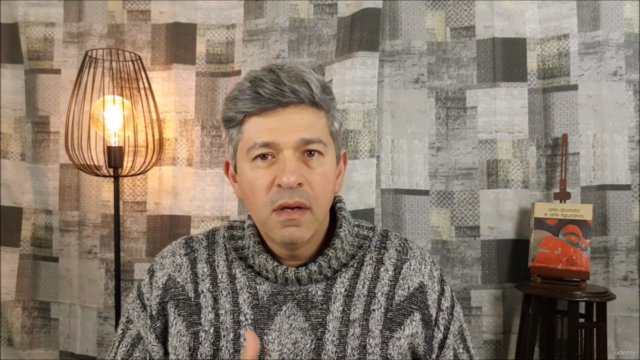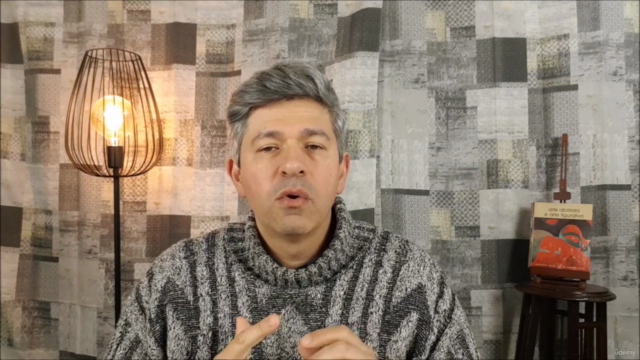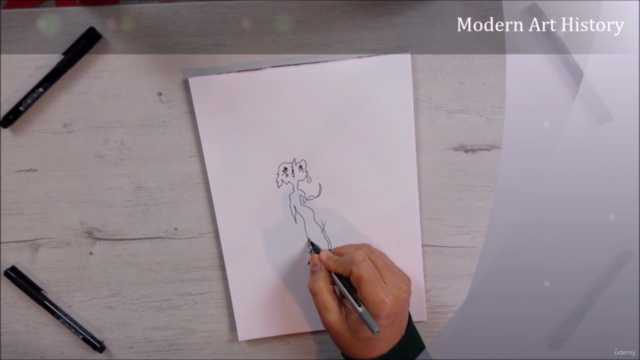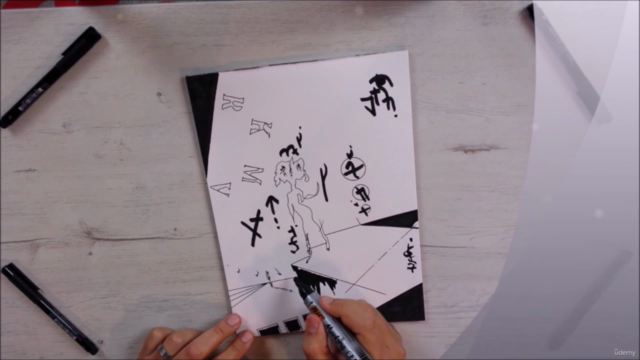Drawing & Painting
Painting History & Marketing plan
3.98 (25 reviews)

1 900
students
5 hours
content
Aug 2022
last update
$39.99
regular price
Why take this course?
based on the structure you've provided, it seems like you're outlining a comprehensive course on modern visual arts, covering history, practice, and marketing, with a focus on different mediums and techniques. Here's how you can expand on each section to create a detailed curriculum for your course:
Part I: Basics of Visual Arts
A. FUNDAMENTALS:
- Introduction to Visual Arts: Overview of what visual arts encompass, importance, and its relevance today.
- Elements of Art & Principles of Design: Line, shape, space, color, texture, form, balance, contrast, harmony, and unity.
- Art Movements Overview: Understanding the progression from Renaissance to Modernism.
- Historical Context: How historical events influence art movements.
- Cultural Influences: The role of culture in shaping artistic expression.
- Art Criticism: Introduction to interpreting and critiquing artworks.
- Art Terminology: Vocabulary essential for discussing and understanding visual arts.
B. PRACTICE:
- Basic Drawing Skills: Techniques for drawing the human figure, head, and other subjects realistically.
- Color Theory: Understanding color relationships and how to use them effectively in artwork.
- Materials and Tools: Introduction to various materials and tools used in visual arts.
- Creative Process: Guidelines on developing an artistic idea into a finished piece.
- Art Challenges: Encouraging creativity through prompts and exercises.
- Art Techniques: Hands-on practice with different techniques such as shading, crosshatching, etc.
C. MARKETING PLAN:
- Online Presence: Creating profiles on art platforms like Artsy, Saatchi Art, and social media.
- Offline Strategies: Participating in local galleries, art fairs, and exhibitions.
- Time and Money Management: Planning a budget and timeline for creating and selling artwork.
- Networking: Building relationships with other artists, curators, and collectors.
D. GOALS:
- Recognition: Strategies to gain exposure and recognition in the art world.
- Stability: Finding a balance between creativity and financial stability.
- Defining Success: Personal goals and what it means to be successful as an artist.
Part II: Modern Art - History
A. History:
- Introduction to Modern Art: Defining characteristics of modern art.
- Art Movements: In-depth look at movements like Abstract, Cubism, Surrealism, Expressionism, etc.
- Drawing and Painting Techniques: Historical context on how these techniques evolved.
- Sculpture in Modern Art: The role of sculpture in different modern art movements.
B. PRACTICE:
- Artists Examples: Case studies of influential artists within each movement.
- Using Simple Materials: Encouraging innovation with limited resources.
- Drawing and Painting Connection: Understanding the relationship between these two mediums.
- Advices: Tips from renowned artists on their practice.
C. CONCEPTUAL Art:
- Understanding Conceptual Art: Definition, history, and examples of conceptual artworks.
- Practice: Guided exercises to create conceptual art pieces.
Part III: Advanced Practice
A. PRACTICE:
- Artists Examples: Exploring the works of artists who push boundaries in their mediums.
- Using Simple Materials: Finding creative ways to use everyday materials in art.
- Drawing Techniques: Advanced drawing methods and stylistic development.
- Advices: Practical tips for developing a unique artistic style.
B. ILLUSTRATION:
- Digital Illustration Steps: A step-by-step guide to creating digital illustrations from concept to completion.
- Using Light Table and Other Tools: Techniques for transferring sketches to different mediums.
- Exporting and Printing: Best practices for preparing digital art for printing.
C. Whatever Art:
- Open Exploration: Encouraging artists to experiment with new ideas and mediums without constraints.
- Project and Documentation: Guidance on creating a project from concept to presentation, including documentation of the process.
Final Assessment:
- Art Creation: Students complete an art piece that demonstrates their understanding and application of course content.
- Critique and Reflection: A peer review process where students provide feedback on each other's work and reflect on their artistic growth.
- Documentation and Presentation: Students present their artwork, explaining their creative process and the techniques used.
This structure provides a comprehensive overview of modern visual arts, from the basics to advanced practice, with an emphasis on both historical context and hands-on experience. It prepares students to critically engage with art, create meaningful works of their own, and navigate the art world with confidence.
Course Gallery




Loading charts...
2146958
udemy ID
12/01/2019
course created date
30/08/2019
course indexed date
Bot
course submited by